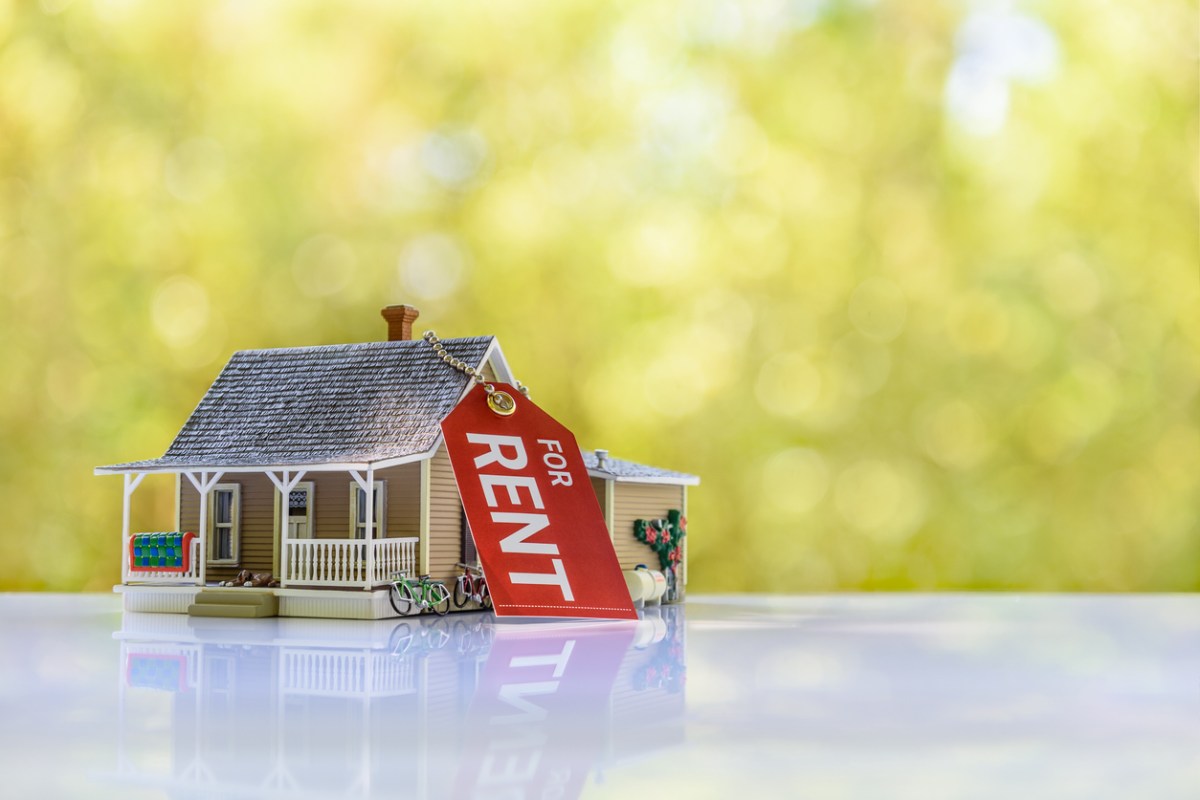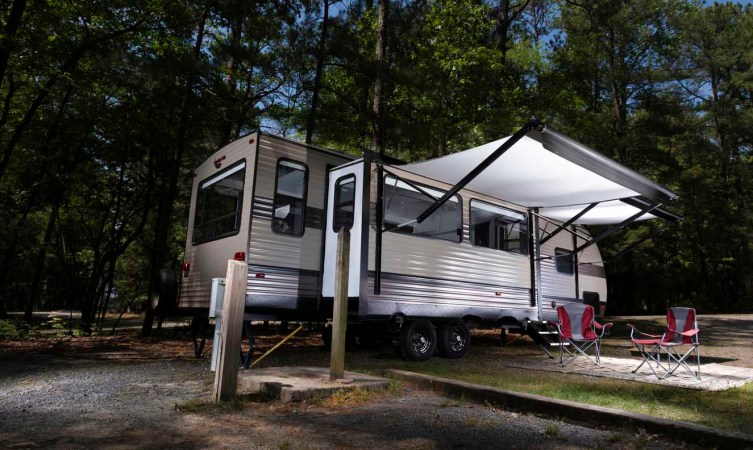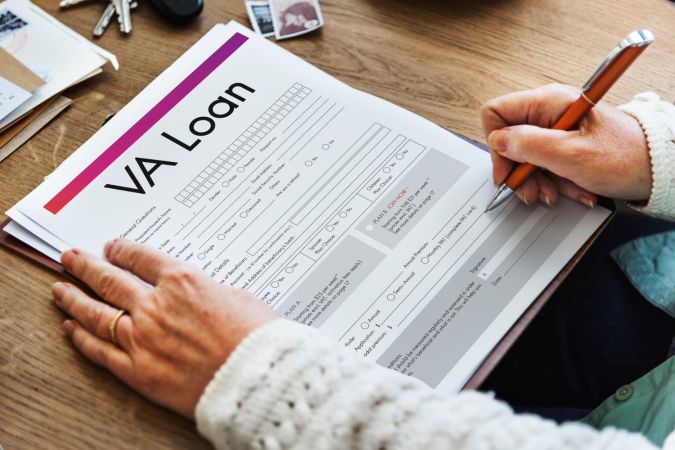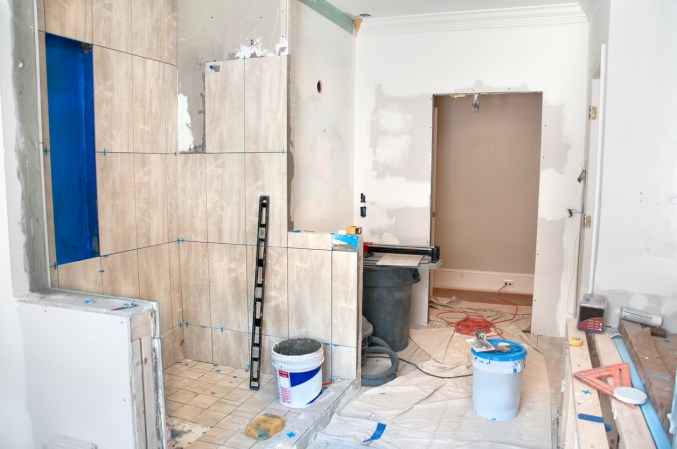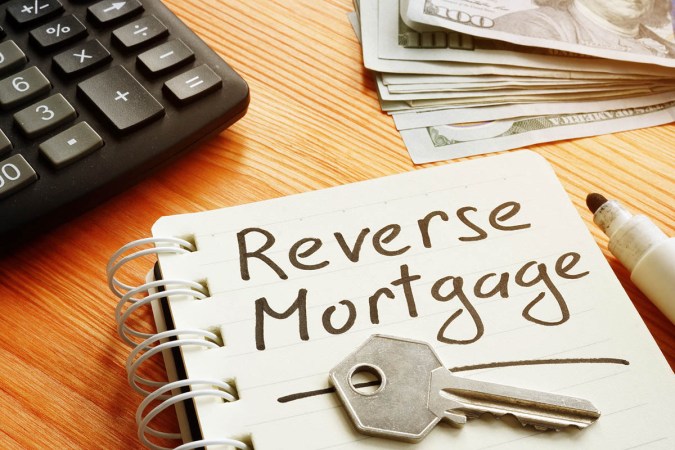We may earn revenue from the products available on this page and participate in affiliate programs. Learn More ›
From earning passive income to capitalizing on tax breaks, there are many potential advantages to owning and operating a rental property. But while the appeal of a rental property may be obvious, understanding how to finance a rental property may be less clear—particularly for first-time investors.
Felton Ellington, lending manager at JPMorgan Chase & Co., notes that real estate can provide either recurring revenue or future profits for owners, depending on how the property is used. “An investment property is a piece of real estate you or a group of people own with the intent of driving profit,” he says. “This might mean a monthly profit from renting out your property, or a profit down the line when you eventually sell. There are various loan options to consider with a real estate investment. It’s important to remain cautious about your debt, but it is good to know that there [are loans available].”
Potential real estate investors looking to better understand the different types of home loans available can begin with this step-by-step guide to financing a rental property. This will allow them to confidently identify the loan option for their circumstances.
Before You Begin…
The decision to invest in a rental property is not one to be made lightly. Before becoming a landlord, prospective property owners may want to consider several factors, including how this purchase could potentially impact their day-to-day lives.
After all, landlords hold a significant amount of responsibility, from costs to maintenance, which they will need to be prepared to handle when they choose to rent out their property. Those who are up to the task will find multiple financing options available for the best investment property loan for their needs.

STEP 1: Research the rental market and determine how much you’ll need to purchase a rental property.
Before identifying the specific rental property loans worth considering, potential real estate investors will first need to know how much money they are looking to borrow. That means researching the rental market to get a sense of how much an investment property in the right location will cost. Once investors decide they are ready to buy a rental property, the process of choosing the right property will involve several steps.
According to Ellington, a smart investor will turn to the market to set a budget and select a property. “If you’re planning to rent out your investment property, determine what features would be most important to have for renters,” he advises. “Look at comparable properties in the area and what they are selling and renting for to understand what you should prioritize in terms of features. Regardless of what you’re looking for, remember to be flexible, as that can unlock more possibilities in your price range.”
With the ideal rental property identified, borrowers will know exactly how much money they will need to make their initial investment.
STEP 2: Check your eligibility criteria—income, credit score, and debt-to-income ratio, among others—to see how much you might qualify for with a loan.
Borrowers will need to meet certain income, credit score, and debt-to-income requirements to qualify for investment property financing. While homeowners may be familiar with this process as a result of their own experience applying for a mortgage, it’s important to note that loans for rental properties typically come with stricter qualification standards than those for primary residences. As such, potential investors will want to understand these requirements ahead of time so they put themselves in a better position to have their loan approved.
For borrowers who want to see how their finances stack up against a lender’s expectations, Ellington recommends going straight to the source. “Like [with] any home [purchase], it is helpful to get prequalified for a mortgage,” he notes. “To be sure you’re getting the best deal, talk with multiple lenders and compare.”
Getting prequalified allows real estate investors to know how much they are likely to qualify for before applying for a loan. This can be helpful when weighing investment property options.

STEP 3: Apply for a conventional investment property loan from a bank or mortgage company.
Conventional loans, which help many homeowners finance their primary home purchase, are also available for investment properties. However, mortgage lenders typically have higher standards for investment property loans, which prospective buyers will need to meet to secure this form of rental property financing. In order for a borrower to qualify for a conventional loan on an investment property, many lenders require a minimum credit score of 620, a debt-to-income (DTI) ratio below 45 percent, and a hefty down payment of at least 15 percent of the purchase price. Exact requirements will vary depending on the lender and the borrower’s financial circumstances, though.
Ellington explains that these stricter requirements have to do with the level of risk assumed by the lender. “Down payments are usually higher for investment properties than primary residences,” he says. “You will typically see lenders ask for a 15 to 25 percent down payment. Lenders will accept a wider range of down payments for primary residences because there is less risk.”
In short, most lenders believe homeowners are less likely to default on a loan for the home they actually live in. With any additional property purchases, however, buyers will need to be prepared to make a larger down payment for a rental property.
STEP 4: Tap into your existing equity with a home equity loan or HELOC.
Would-be real estate investors who don’t have the cash on hand to make a down payment on a conventional loan can instead consider tapping into their home equity. Home equity refers to the amount of the home owned by the homeowner. Homeowners can borrow against this amount in multiple ways, including home equity loans and home equity lines of credit (HELOCs). “Take advantage of the equity you’ve built in your primary or secondary residence to help fund an investment property,” suggests Ellington. “You [may be able to access] up to 80 percent of your home equity if you take out a home equity loan.”
With a home equity loan, homeowners receive a lump sum that is repaid through fixed payments over a period of time that typically lasts up to 30 years. HELOCs, meanwhile, allow homeowners to borrow funds as they need them by providing a line of credit to draw from, rather than dispersing funds as a lump sum. Both home equity loans and HELOCs can be viable options for financing investment properties, but it’s important to note that HELOCs come with variable interest rates, which means rates could increase down the road. For this reason, buyers will need to consider all of their options carefully to find the best loan option for them. Those interested in this type of financing may want to reach out to some of the best home equity loan providers (such as U.S. Bank and Flagstar Bank) to see what options are available for real estate purchases.
STEP 5: Consider a cash-out refinance on your home to get funds to pay for a rental property.
Homeowners can also tap into their home equity with a cash-out refinance. Unlike a home equity loan, which requires homeowners to make two monthly mortgage payments, a cash-out refinance allows borrowers to replace their current mortgage with a larger one, receiving the difference in cash.
But before homeowners seriously consider a cash-out refinance, they may want to look at the state of the housing market and mortgage industry. This is because a cash-out refinance will typically alter the terms of their original mortgage, so homeowners will want to avoid refinancing when interest rates are higher. On the flip side, when market rates are low, a cash-out refinance could allow homeowners to receive the cash they need to finance an investment property while also lowering the interest rate on their primary mortgage. Another point to consider is that a cash-out refinance, home equity loan, and HELOC all use the borrower’s property as collateral. Those who default on their loan payments may put their home at risk for foreclosure.

STEP 6: Ask lenders about hard money loans—but look out for high interest rates and stringent down payment requirements.
In real estate, hard money loans, also referred to as bridge loans, are often short-term loans that provide cash to borrowers who intend to repair or renovate a property and resell it. Home buyers may use hard money loans to make a down payment on a new house while they wait to sell their current home. This form of financing is issued by private lenders, so unlike traditional loans, the ability to secure a hard money loan may not depend on the borrower’s creditworthiness. Instead, loan qualification can often depend on the value of the assessed property being purchased.
Due to their unique structure, bridge loans are among the best loans for flipping houses. However, investors may want to keep in mind that these types of loans typically come with higher interest rates, stricter down payment requirements, and significantly shorter repayment terms.
STEP 7: Look into specialized loan programs such as Freddie Mac’s Investment Property Mortgages.
Specialized loan programs may make it easier for real estate investors to afford a rental property. The Federal Home Loan Mortgage Corporation, more commonly referred to as “Freddie Mac,” offers investment property mortgages with relatively low down payment requirements, paving the way for qualified borrowers who require flexible financing options.
This unique loan program could allow buyers to secure the financing they need for 1- to 4-unit properties, though some stipulations apply. For example, with a Freddie Mac investment property mortgage, the borrower cannot be affiliated with or related to the builder, developer, or property seller in any way. Investors will also need to live in the property for a minimum of a year to qualify for this loan type, so prospective buyers will need to think long and hard to decide whether this option may fit their needs.
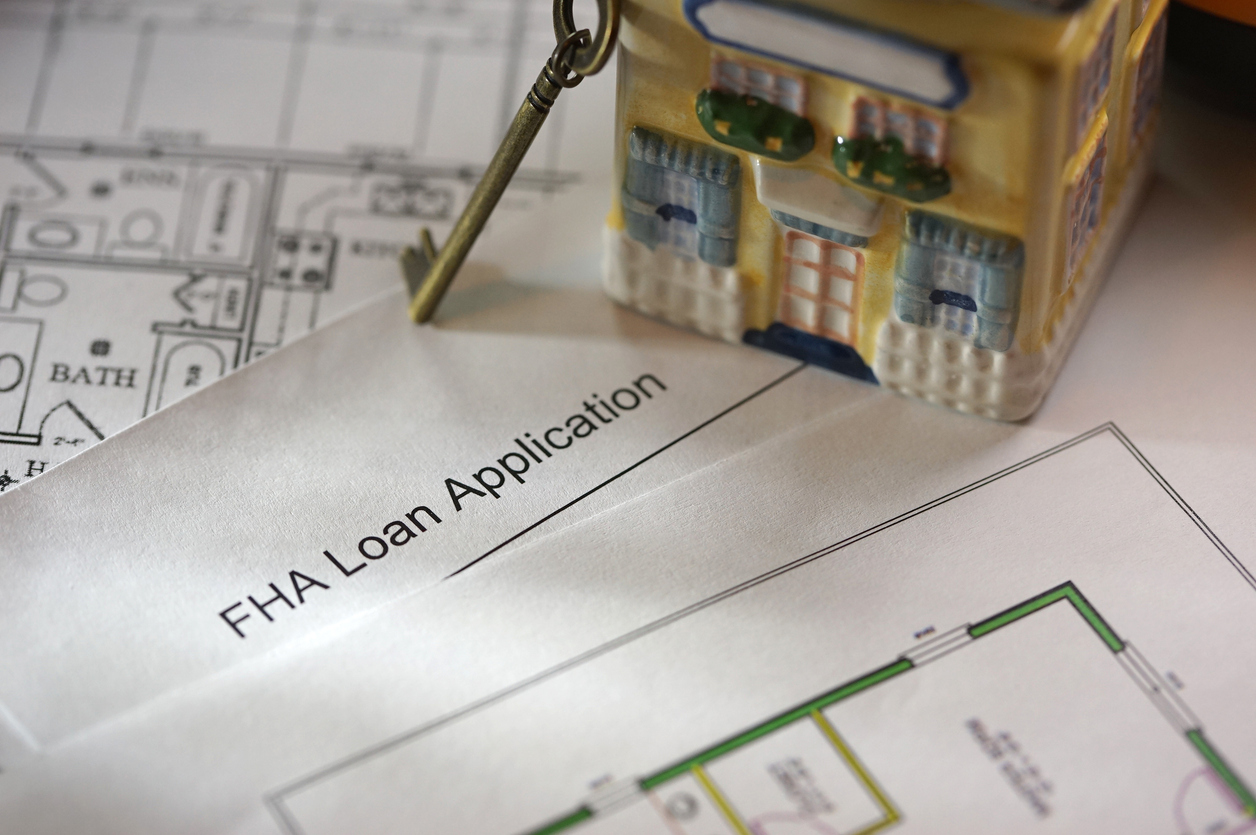
STEP 8: Explore multifamily loans backed by the federal government—including FHA and VA loans—if you’re buying a multiunit property and plan to live on the premises.
Multifamily loans, offered by both the Federal Housing Administration (FHA) and the U.S. Department of Veterans Affairs (VA), provide a different option for borrowers looking to invest in multiunit properties. These properties typically consist of two, three, or four separate dwelling units. While income, credit, and DTI requirements still apply, there are a few key differences between multifamily and single-family investment loans.
For instance, multifamily homes must be owner-occupied in at least one unit, meaning investors will be required to live in one of the units while renting out the rest. Qualifying for a multifamily loan will also require investors to meet several requirements. Eligible active-duty service members, veterans, and military spouses may lean toward a VA loan, with no mortgage insurance premiums and no down payment required. Those who do not qualify for a VA loan can instead consider an FHA loan, which can be easier to afford than a conventional loan with a minimum down payment of 3.5 percent.
STEP 9: Check blanket mortgage options if you’re interested in buying multiple rental properties at the same time.
Borrowers looking to invest in multiple properties may also want to consider the potential benefits of a blanket mortgage. A blanket mortgage is a single loan that covers two or more pieces of real estate. For investors looking to own and manage multiple rental properties, the opportunity to package these properties into one mortgage, rather than obtaining individual financing for each, may be appealing.
Due to the increased loan amount, blanket mortgage costs tend to be higher than what buyers would pay for a traditional mortgage. Investors also need to be aware that defaulting on a blanket mortgage could lead to the lender reclaiming not just one, but the entire set of properties. Still, blanket mortgages have a few distinct advantages, allowing investors to finance multiple properties at once and ultimately saving them money on application and closing fees.
STEP 10: Ask lenders if they offer portfolio loans to finance rental property purchases.
While banks and mortgage lenders use their own funds to finance home loans, it’s important to understand that these loans are often resold on the secondary mortgage market, allowing the lender to free up enough capital to continue loaning money to additional borrowers.
A portfolio loan is a mortgage originated and retained by a lender, remaining in its portfolio for the full repayment term. Although portfolio loans often come with higher qualification standards due to the increased risk for the lender, these loans are nonconforming, which means they can offer some unique benefits to real estate investors, including more flexible terms, potentially higher loan amounts, and a faster financing process. As such, prospective borrowers won’t want to overlook this option.

STEP 11: Negotiate seller-financing terms with another landlord looking to sell their rental property.
Seller financing is a real estate agreement in which the buyer pays the seller in installments rather than purchasing the property with a traditional mortgage. Seller financing can be an attractive option for borrowers who may not qualify for other forms of financing. This is because the direct line to the seller removes the need for a mortgage lender, allowing for more flexible income, credit, and down payment requirements.
Potential investors may be able to secure seller financing if they find a landlord looking to part with their property. Despite the advantages of this unique financing option, it’s important to note that seller-financing terms can vary significantly and are not beholden to the standard regulations that protect home buyers under a traditional mortgage. This means buyers may need to do some negotiating to settle on fair terms.
STEP 12: Find an investor to bankroll the purchase and become an active or silent partner in the business.
Another way to secure financing in real estate is by finding an independent investor to bankroll the purchase. Private money lenders are often real estate professionals who prefer to fund the purchase of rental property rather than buying one themselves.
Loans from private lenders are less regulated than traditional forms of real estate financing, which can make it easier for buyers to qualify for a loan and purchase a rental property. However, before borrowers commit to one of these loans, they will need to do their research to choose an investor they can trust; otherwise, they could find themselves with less than favorable loan terms and interest rates. In addition, borrowers will want to detail exactly what the partnership will entail before agreeing to terms. Some borrowers may be looking for a silent partner who steps back and allows them to manage the property on their own, while others may want an investor who is more actively involved in the day-to-day real estate operations.
Funding real estate investments can seem like a daunting task for first-time investors who don’t know where to begin. Still, there’s a reason so many people choose to invest in real estate. “There are no guarantees in investments, but real estate proves to be a steady rate of return and profit,” says Ellington. “An investment property may be a good option for you if you have the funds to invest and take on the responsibility of owning additional property.”
Investors will need to examine their options carefully when financing a rental property and becoming a landlord. It’s a good idea to take a close look at the current rental market and the property itself before choosing the form of financing that is best suited for their needs.

